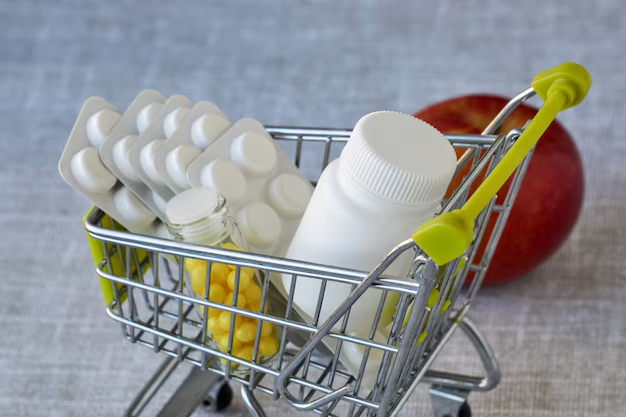Can You Buy Vitamins with EBT? Everything You Need to Know
Navigating the rules and regulations of shopping with government assistance can sometimes feel like solving a complex puzzle. When it comes to using the Electronic Benefits Transfer (EBT) card—often associated with the Supplemental Nutrition Assistance Program (SNAP)—one recurring question is: Can you buy vitamins with EBT? The short answer is no, but there's more to explore when considering why this is the case and how to make the most out of EBT benefits.
Understanding EBT and SNAP
Before diving deep into the question of vitamins, it's essential to understand what EBT and SNAP are. EBT is the electronic system that allows a recipient to authoritatively access their financial benefits. On the other hand, SNAP provides nutritional assistance to millions of eligible, low-income individuals and families. These benefits are intended to cover essential food purchases to ensure a healthy diet.
What You Can Buy with EBT
EBT can be a helpful tool in a family's financial strategy, but understanding what can and cannot be purchased is crucial:
- Eligible Items: Foodstuffs such as fruits, vegetables, meat, poultry, fish, dairy products, breads, cereals, and seeds or plants that produce food.
- Non-Eligible Items: Non-food items such as household supplies, alcohol, tobacco products, vitamins, medicines, and hot prepared foods.
Why Vitamins Aren't Covered
Vitamins and supplements fall under the category of non-essential food items. Because the primary goal of SNAP benefits is to provide nutritional support, items categorized as supplements—identified by their label—do not qualify for purchase with EBT. This rule helps to ensure that allotted resources focus on directly consumable foods that contribute to an immediate dietary regime.
Exploring Alternatives: Accessing Essential Nutrients
While vitamins purchased directly are not permitted, there are strategies to maximize nutrient intake using EBT in other forms.
Prioritize Nutrient-Rich Foods
Focus your EBT purchases on foods naturally rich in vitamins and minerals:
- Fruits and Vegetables: Brightly colored fruits and vegetables are rich in essential vitamins. Carrots, spinach, tomatoes, and citrus fruits are excellent choices.
- Whole Grains: Brown rice, quinoa, and whole wheat products are fortified with additional nutrients.
- Dairy and Proteins: Eggs, milk, yogurt, and lean meats provide valuable vitamins and minerals crucial for maintaining good health.
Growing Your Own Nutrients
Did you know EBT benefits can be used to buy seeds and plants? Creating a small home garden not only provides access to fresh produce but can also be a cost-effective way to access high-vitamin foods.
Navigating EBT Restrictions: Tips for Wise Shopping
Understanding EBT regulations can initially appear daunting, but by keeping a few shopping strategies in mind, you can stretch your benefits further while ensuring balanced nutrition.
Plan Your Purchases with Weekly Menus
Having a structured menu helps maximize the use of EBT. Consider the following:
- Create a Balanced Menu: Incorporate foods from all food groups included in the SNAP-eligible list.
- Avoid Impulse Buys: Keep to your set menu to ensure you buy only what is needed.
Use Coupons and Sales
Combine EBT transactions with store promotions or coupons to lessen the financial burden and make room in your budget for fresh and nutrition-rich foods.
Community Resources and Workshops
Look for local workshops or community classes offering education about sustaining a healthy diet on a limited budget. These often provide insights into budgeting and shopping for maximum nutrient intake.
EBT and SNAP: Policy Insights and Possible Changes
While the current regulations do not allow for the purchase of vitamins with EBT, there is an ongoing conversation about modifying these rules to adapt to modern dietary needs. Advocacy groups frequently debate expanding SNAP benefits to cover more nutritional items in response to growing awareness surrounding health and nutrition.
Participation in the Policy Process
If you're optimistic about seeing these changes, consider engaging with local advocacy efforts. Community voices often shape policy reforms, and knowing your concerns and proposing viable solutions could foster change.
Possible Future Directions
Looking at evolving public policies, there's potential for expanded definitions and clarity in nutritional guidelines that might include vitamins. However, any changes would require significant policy shifts at federal and state levels, reflecting extended support for holistic nutrition.
💡 Key Takeaways: Maximizing Nutrition with EBT
Here are some practical pointers to utilize EBT to the fullest, ensuring comprehensive nutrient coverage without direct vitamin purchases:
- Focus on Nutrient-Dense Foods 🥦: Opt for whole foods rich in natural vitamins.
- Start a Small Garden 🌱: Utilize EBT to buy seeds and grow fresh produce.
- Plan Thoughtfully 🛒: Structure menus around eligible nutritious food categories.
- Leverage Promotions 🔖: Align your purchases with sales and coupons to extend funds.
- Engage in Community Resources 🤝: Attend workshops for additional strategies on achieving a balanced diet using EBT.
In essence, while vitamins are not currently purchasable with an EBT card, understanding food options and leveraging available resources can effectively close the nutritional gap, supporting a healthy lifestyle for you and your family. By creatively navigating the EBT system, you can still achieve balanced and nutrient-rich dietary outcomes.

Related Topics
- Are There Any Meal Kits That Accept Ebt
- Can I Add Ebt To Apple Pay
- Can I Buy Dog Food With Ebt
- Can I Buy Protein Powder With Ebt
- Can I Get a Replacement Ebt Card The Same Day
- Can I Use Coupons With My Ebt At Walmart
- Can I Use Ebt At Costco
- Can I Use Ebt At Target
- Can I Use Ebt Cash On Amazon
- Can I Use Ebt In Another State